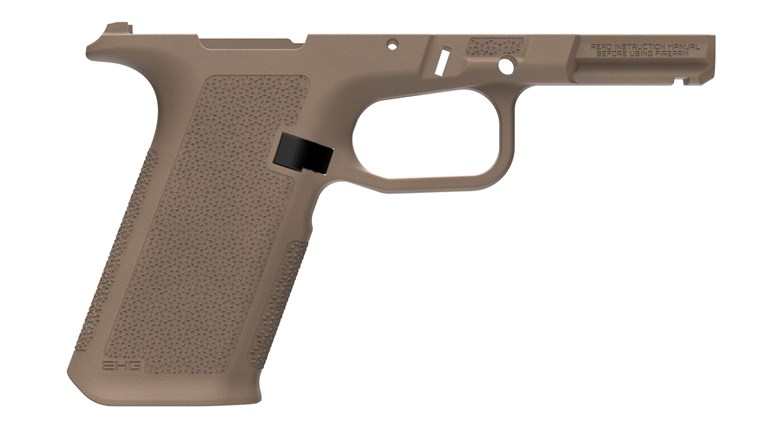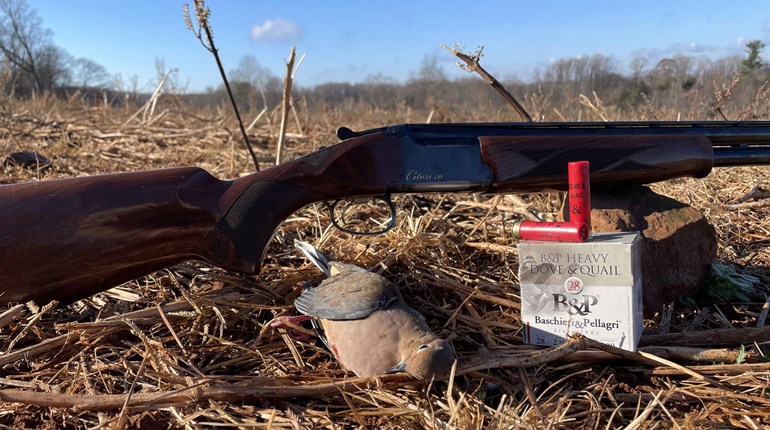
Have you ever had an enraged, oversized black bear charge your ladder stand, fully intent on eviscerating you? I haven’t, but a fellow hunter I was in camp with did. Obviously, the hunt went awry—seriously awry. She wasn’t bluffing, either. Fortunately, a well-placed, handloaded Hornady InterLock 180-grain RN from a Ruger American chambered in .30-06 Springfield stopped dead her assault.
Of all the huntable species worldwide, there’s a certain allure to pursuing bear, and Ursus Americanus in particular. It could be their widespread distribution, predatory nature, keen senses (at least some) and the ever-present danger, or, when prepared correctly, delectable protein. It varies by individual, but there’s no denying the addiction.

What type of bullet is best for hunting this potentially dangerous animal? It depends. Here’s why: The average black bear isn’t particularly stout; it has relatively thin skin and it’s muscular and skeletal structures are such that the vital organs are easily reached. However, there are several key differences between it and America’s foremost game animal, the whitetail deer—also considered “thin-skinned.” Beyond the obvious anatomical dissimilarities when studied side-by-side, often overlooked are the reams of fat and extra-long and -dense fur, which disrupts hemorrhaging. Between the two, they’re akin to putting a gauze pad on the entrance and/or exit wound. As a fleeing black bear can run 30 to 35 mph—give or take—that can greatly complicate the recovery process.

What’s more, there is inherent and tremendous, danger associated with tracking a wounded black bear. Forget the notion that it will only run away from the hunter following negligible blood; in actuality, at any time, the animal could turnabout and attack its pursuer. Not only is it especially challenging to stop a bear with resolve, but it can also deliver a lethal blow in short order. The axiom, “The best defense is a good offense” certainly applies here.
Keep in mind too that the average bear is what hunters take, not the largest extant. According to the California Department of Fish & Game, the average weight of a black bear is around 300 pounds. The Maine Dept. of Inland Fisheries & Wildlife identifies the mean starting weight (for males) as being 250 pounds Whereas the former puts 500 pounds at the upper end of the weight spectrum, the latter notes 600 pounds In reality, they can grow much, much larger. For instance, according to multiple sources, during the 2021 season Pennsylvania hunter Wade Glessner killed a 722-pound bear. Think that’s big? Think again. The largest in Pennsylvania was taken in 2010 and weighed 875 lbs.—a far cry from the “average.” Five hundred to 800-pound bears aren’t uncommon in the state, either. Nor are they in other places, such as New Jersey, North Carolina (particularly renowned Hyde County), Virginia, Alaska, and Canada, to name a few.

The truth is that behemoths are possible anywhere favorable conditions are met; ample food and time to age/grow are essential. The abovementioned factors complicate the bullet buying process. Why?
Essentially, you have two choices. You’ll need to choose between a bullet that expands widely or loses a significant amount of its pre-expansion weight—both of which negatively affect penetration—or one that maintains its integrity for deep penetration and, perhaps, an exit. How do you know which is right for you? I reached out to well-known ammunition manufacturers and outfitters across the country. Not all responded, but those that did will assist you in making that all-too-important decision. Read on.
Rapid-Expansion Bullets with Medium to Low Retained Weight
Weight retention and expansion diameter are heavily influenced by impact velocity—especially when approaching or surpassing 3000 fps. As a rule, for cup-and-core-type bullets with a mechanical lock (or similar), the faster it hits, the wider it’ll expand and/or the greater percentage of material will be shed. Both can prevent the projectile from exiting; therefore, you could only have the entrance hole to aid tracking. However, said shed material greatly enhances the bullet’s ability to damage vital organs, which hastens its expiration. It’s a Catch-22.

Additionally, because the bullets cannot penetrate as deeply, there’s less margin for error in shot placement and they’re a poor choice for stopping a charging bear. Concerning the latter, the projectile could fail to reach critical organs and skeletal structures to stop an attack. Due to their positive attributes though—namely rapid expiration on fairly hit black bears—they’re the bullets of choice of some hunters.
“For most lower 48 black-bear hunters I think it would be best to use a rapid-expansion, deer-hunting-type bullet,” said Nathan Robinson, media relations manager for Winchester Ammunition. “I would recommend Deer Season XP, Ballistic Silvertip, or PowerPoint from our lines. The average bear killed in the states is less than 200 pounds, and bears in that size range are not particularly thick or hard to penetrate into the vitals. They do, however, [tend to] not leave very good blood trails because of their fat and thick hair, which is why you want them dropping as soon as possible. They also generally live in or near thick, nasty cover where they can almost immediately disappear. Rapid expansion and maximum energy transfer are preferred over controlled expansion and weight retention.”

“Berger [bullets] work great on just about any game,” explained Geoff Esterline, marketing director for Capstone Precision Group, LLC, which represents Berger Bullets and Lapua, among others. “But it’s imperative that you perform proper shot placement in the vitals. If you want to bust shoulders or hunt larger, heavy skinned game, the higher weight retention products are the most forgiving.” The last two words are key.
“Personally, I’d recommend using either a heavy-for-caliber, lead-core bullet like our InterLock, SST or ELD-X, or a ‘standard’ weight monolithic bullet like our CX,” shared Seth Swerczek of Hornady Mfg. Co. “I’m a lead-core bullet fan through and through. If I’m afield there’s a darn good chance my rifle is loaded with an ELD-X bullet. I like the more dramatic energy transfer of a lead-core bullet, personally.”

In addition to the products mentioned above, others in the class include: Nosler Ballistic Tip Hunting; Sierra GameKing and Pro-Hunter; Browning BXR; Lehigh Defense Controlled Chaos and Controlled Fracturing; Speer Gold Dot, Hot-Cor, and Boat-Tail; Federal Fusion and Power-Shok (jacketed soft point); Berger Classic Hunter and VLD Hunting; Norma EVOStrike and Whitetail (jacketed soft point); and Remington Core-Lokt and Core-Lokt Tipped, among others.
Controlled Expansion Bullets With, High Retained Weight
The other option is a controlled-expansion projectile exhibiting maximum retained weight. Typically crafted with a crossmember or bonding (or both) in lead-core variants, or from a single piece of material (i.e. copper, gilding metal), said bullets are preprogrammed to expand predictably and uniformly while maintaining most, if not all, of their original weight, which enhances penetration. These projectiles have the ability to drive deep, even through dense bone and muscle, and thus are more likely to reach critical organs and structures from awkward angles. Remember, not every shot is taken on a perfectly broadside animal—especially if it’s bearing down on you. With two holes to intensify hemorrhaging, tracking is easier, too. High impact velocities are of minimal concern with them. For the reasons above, as well as the fact that you may encounter a larger-than-normal specimen, bullets of this type are most frequently recommended. Here’s what the manufacturers and outfitters had to say.

“I’d prefer controlled expansion with high maintained weight on thick-skinned game, personally,” divulged Esterline. “Lapua MEGA and Naturalis (lead-free solid), for example.”
“At some angles/distances and with some bears, and the amount of fur, where exactly to hold the crosshairs can become hard to pick out,” Swerczek opined. “By opting for a monolithic bullet or a heavy-for-caliber lead bullet, you put the odds in your favor should you unknowingly put a bullet squarely on the shoulder. Retaining nearly all of its weight, [the monolithic] will go through the shoulder easily. The heavier lead core will indeed shed some with as it breaks through the shoulder, but the added weight will help it to penetrate deeper despite the lower retained weight percentage.”

“If you are targeting monster boars and plan to shoot something in the 400- to 600-pound range, then a hard-hitting, deep-penetrating bullet is in order,” stated Robinson. “Bonded and solid-copper bullets maintain their weight and drive deep through thick hide, bone, and muscle to ensure it penetrates the vitals. These tougher bullets are also in my consideration set if I’m hunting open country where losing sight of a wounded bear is less likely. Winchester Expedition Big Game or Copper Impact would be great options in this scenario. Copper Impact is a nice hybrid because it has an oversize hollow-point cavity that initiates expansion immediately, and violently, for great knockdown power, but its solid-copper construction provides excellent penetration.”
Robinson’s observations match that of the Maine and Alaskan outfitters. “Bullets are more important than the caliber of high-power weapons,” wrote Kurt Whitehead of Treasure Hunter Lodge on Prince of Wales Island, Alaska. “Larger and denser bullets do a better job of killing/inflicting damage. We recommend premium, controlled-expansion bullets such as Barnes Triple Shock, Trophy Bonded Bear Claw, Nosler Partition, and Core-Lokt in the largest bullet size available for your weapon.” What’s not recommended? Fragmenting ammunition. Why? “Most of our clients shoot bears that are well over 350 pounds with many in the 450-pound category,” added Whitehead. “We recommend all-copper bullets.”

Taj Shoemaker of Grizzly Skins of Alaska agreed, stating, “We only outfit for brown bear. We do hunt black bear personally. Same, same for bullets only it’s more important on brown bear. Controlled expanding! Have good luck with Barnes X, Nosler Partition and AccuBond, the old Remington Core-Lokt, Swift A-Frame, North Fork, Speer Hot-Cor, and many others.”
In the areas that Foggy Mountain Guide Service clients hunt, they take, on average, 250-pound bears; however, many go over the 400-pound mark. For that reason, and the fact that shots in the thick Maine woods are close, owner Brandon Bishop reported that “slower, hard-hitting bullets that put a big entrance and exit wound” are preferred. Dual holes make tracking easier. That’s the forte of controlled-expansion bullets.

Robinson also had the following sage advice to offer. “If you plan to hunt somewhere you might encounter a grizzly, your rifle may also serve as a defense tool. In that case, I would select a bonded or copper bullet in the biggest caliber you feel comfortable with.”
Given the overall trend toward controlled-expansion, high-weight-retention bullets, it makes sense that there are many from which to choose. Among the best are: Barnes TSX, TTSX, and LRX; Swift A-Frame and Scirocco II; Nosler AccuBond, E-Tip and Partition; Speer Grand Slam and Impact; Hornady CX, InterBond and MonoFlex; and Federal Trophy Bonded Bear Claw, Trophy Bonded Tip, Trophy Copper, Power-Shok Copper and Terminal Ascent, to name a few. Lehigh Defense Maximum Expansion bullets retain their weight but, due to their wide expansion diameters, penetration will be on par with many low- to mid-weight retention bullets.
So which bullet is right for your next black bear hunt? Depends on the hunt and your preferences. Use what you learned here to make an informed decision.




































